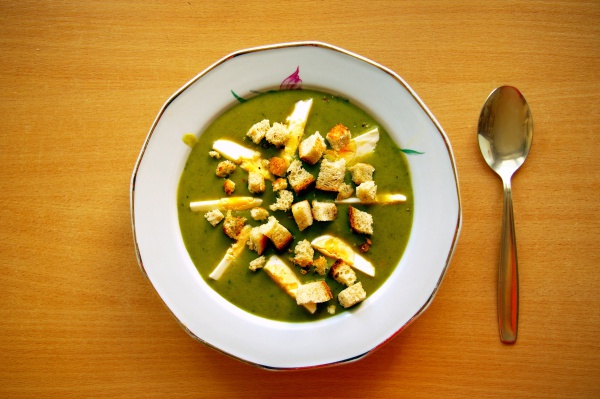Facts About Sorrel soup
Sorrel soup is a cherished classic in many Eastern European cuisines, including Ashkenazi Jewish, Belarusian, Estonian, Hungarian, Latvian, Lithuanian, Romanian, Armenian, Polish, Russian, and Ukrainian traditions. This tangy soup is typically prepared with water or broth, fresh sorrel leaves, and a pinch of salt. Often, additional greens such as spinach, chard, nettle, dandelion, goutweed, or ramsons are incorporated for extra flavor and nutrition. Known by various names, including "schav" "shchav" "shav" or "shtshav" from Yiddish and Slavic languages, sorrel soup stands out as a versatile dish.
Common ingredients added to the soup include egg yolks, potatoes, carrots, parsley root, rice, and sometimes beetroot. The choice between using broth or water can vary by region. A dollop of smetana (a type of sour cream) is frequently used as a garnish, and the soup can be served either hot or chilled. The distinctive sour taste of the soup comes from the oxalic acid in the sorrel leaves, providing it with a unique "tangy" flavor.
In Russian cuisine, sorrel soup is affectionately known as "green shchi" or "green borscht" akin to the well-known beetroot borscht. The name "sorrel" traces back to the Proto-Slavic word for the plant. Historically, old Russian cookbooks simply referred to it as "green soup."
Sorrel soup is a versatile dish that fits perfectly whether you're looking for a comforting, warm meal or a refreshing, chilled option. Its unique flavor and adaptability have made it a beloved staple in Eastern European culinary traditions.

 Slovakia
Slovakia